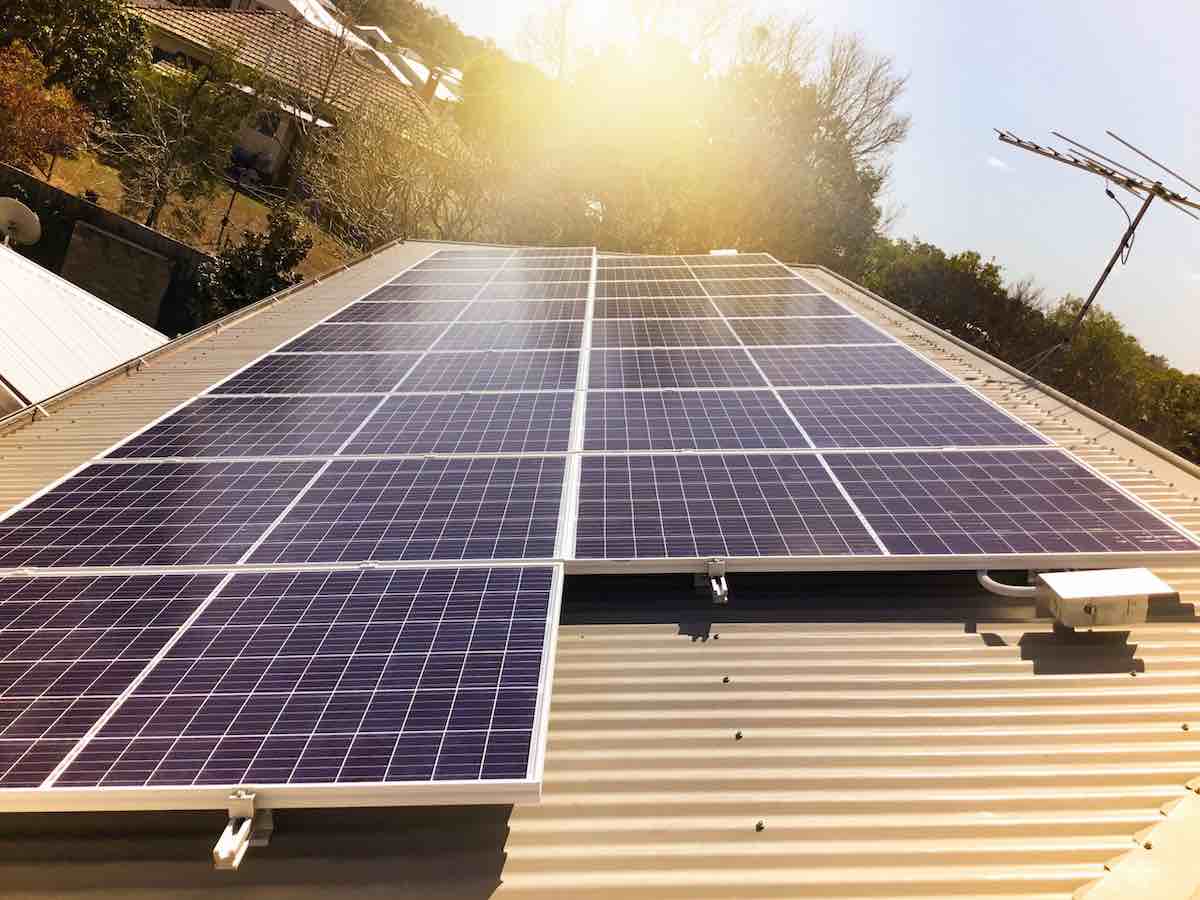The final handover report from the former Energy Security Board, released by the federal government, calls for energy distribution companies to integrate household solar into the grid. But it falls short of recommending the governance and competition reset that is required.
The first electricity grids in Australia were local ‘municipals’ either privately owned or owned by city councils. As these grids grew, they collided with each other and were ultimately consolidated.
Because there can only be practically one set of wires to each house, the electricity grid is by very definition a natural monopoly. As such these grids wound up being state-owned regulated assets.
As was the fashion in the 1980s and 1990s these things were privatised, in “the interest of efficiency”, which didn’t resolve the natural monopoly problem but rather handed the keys to private enterprise.
In order to prevent price gouging it was thought enough to only allow a fixed rate of return of the “asset base” – the poles and wires. This fixed rate of return is often quite high, around 10%, higher than you or I could get on any investment we made and certainly better than a bank.
To further promote “competition” we introduced the competition reforms in the 1990s that broke the electricity market into four players: generators, transmission (long distance), distribution (local poles and wires) and retailers.
We created a market body, AEMO, owned by the government (60%) and the industry players (40%). This market body gives no direct power to Australia’s consumers, whether or not they are price-taking buyers of electricity or solar and battery owners who could be playing an active part in the market to bring down the cost of energy for everyone.
The price of electricity dropped in Australia from 1950 through 1980. Since we installed these market reforms, privatisation, and “competition” in the 1990s, the price of electricity has skyrocketed.
Yes, you have a choice, you can switch from one retailer to another. But it’s not a real choice, and you still have to pay foreign-owned companies a fixed rate of return for gold-plated assets for a service that used to be owned by our state governments.
And now we have climate change, where it is obvious to anyone but the biggest climate deniers that the solution is household electrification and large-scale renewables – the electrification of our households, including the heat, the water heating, the kitchen, and our cars.
Fortunately, rooftop solar came along and became very cheap. Rooftop solar delivers electricity to your house for around 5c/kWh. The grid averages about 30c/kWh.
You can’t run everything off solar alone, but fortunately batteries are going through a similar price drop, and for those who can afford the capital expense, solar and batteries as a combination are now also cheaper than the grid.
The batteries on four wheels have also arrived and “filling” your car with rooftop solar is the equivalent of paying about 20c/Litre of petrol. You save more than $1000 a year on each car.
But our energy market bodies and regulators, who are meant to regulate us out of this mess, were designed by, and for, the old energy establishment. The consumer and the consumer’s interests are not represented. The existing players run scare campaigns about the switch to a more distributed energy system because they perceive it as a threat.
The existing bodies believe we can evolve one rule change at a time to a new system. This couldn’t be further from the truth.
It is especially untrue until two things happen.
(1) We position with primacy the Australian household as the linchpin, and the customer for whom we are designing this system.
(2) We recognise that Australia’s 20 million vehicles will eventually be a battery 6 times larger than the Snowy Hydro project and that Australian households can easily generate more than half of the energy they need from their rooftops.
Our households and vehicles are critical national energy infrastructure and if the system is designed right, their incorporation and incentivisation in the electricity market will increase reliability and increase resilience and lower the total cost of energy for all of us.
When you have excess solar energy from your roof, it shouldn’t be resold to your neighbour at the retail rate charged for the whole generation/transmission/distribution/retail mess.
It should be sold through at your cost of generation, a little incentivising extra, and the cost of moving it over the local poles and wires. To build a lowest-cost energy system we should maximise the incentives to install the largest rooftop installations we can, and also build community solar over our public buildings and car parks.
None of these things will happen without far more serious “market” reform.
In a perfect world, we would still own our local distribution grids, and we wouldn’t have to negotiate with the new owners to let us do what is necessary.
We shouldn’t have large-scale generators with their hand on the tiller of the market rules and no counter-vailing force from households and businesses, and their distributed assets.
In essence, the grid should be democratic and fair, and households should be incentivised to build this new infrastructure and not pay outrageous rents to the traditional players for their infrastructure instead.
The Australian National Electricity Market (NEM) rules define the roles and responsibilities of the market bodies and what is valued and what is not.
The NEM rules define what commodities are valued and traded, how these commodities are to be traded and by whom.
The NEM rules define who has ‘access’ to value, and this access shapes the future electricity system.
The NEM rules define the roles and responsibilities of the market bodies and condemn them to be stuck in the past.
The Australian Energy Market Operator’s regulated business model means they need to raise income from market transactions. They are 40% owned by the companies that dominate the market and exclude households, which is a very anti-competitive situation.
Rewiring Australia is calling on ministers to write new legislation for an AEMO that requires them to have household energy producer representatives on the board.
Currently AEMO is inherently in a commercial conflict of interest with any energy user with a rooftop solar system. The NEM rules define the roles of the AEMC and the AER functions. The result is an unassailable bureaucracy convinced that markets can solve everything.
The NEM was set up before low-cost solar was available and it needs a redesign by governments not tweaking by regulators.
Rewiring Australia’s plan to deliver bill relief and reform the National Electricity Market involves:
- A governance and competition Review of the National Electricity Market and its ability to deliver the energy transition at least cost to energy users including placing consumers in governance roles in all regulatory bodies.
- Energy Ministers delivering “household-centred rules” of the market to improve take-up of zero-emission all-electric households and creating Zero Emission Community “lighthouse” projects where we rapidly prototype this future in real Australian shires and suburbs.
- A government-led Household Infrastructure financing package from the federal government to help households electrify that addresses issues of equity and access to credit by having the government step in to keep interest rates low and credit access universal.
If households with solar panels, batteries and electric vehicles can trade electricity with each other, that will level the playing field between energy consumers and the NEM-defined big energy companies.
More locally produced energy will both lower system costs and lessen the need for expensive regional transmission infrastructure.
The Federal government should help Australian households invest in this national energy infrastructure – their homes – and remove barriers preventing households from installing solar panels, batteries and vehicle chargers.
We should also remove dumb rules like the outrageous one that allows gas companies to charge you for disconnecting from their gas network. The ACCC should be pushed to address these anti-competitive market rules granted by the AER.
The privatisation, competition, and market reforms demonstrably did not work. The price of electricity has risen when it should be falling.
Our market regulators continue to hit the same bent nail with the same dull hammer, trying to tinker at the edges of a market redesign. We suggest a clean sheet redesign centred around household electrification, rooftop and community solar and electric vehicles.
Electrification will be the fastest, cheapest way to lower energy bills and eliminate polluting fossil fuels. If all Australian households and vehicles were all electric we could save $1 trillion by 2040 while addressing climate change and improving the respiratory health of our children.
Why haven’t we done it already?
Dr Saul Griffith and Dr Vikki McLeod work with Rewiring Australia










